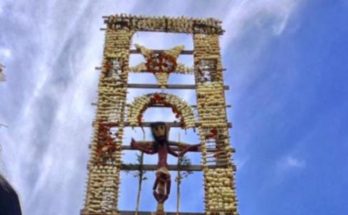By Jose Arturo Morales Tirado
Contemporary art in San Miguel de Allende had a fundamental boost 85 years ago with the founding of the Ignacio Ramírez el Nigromante Cultural Center, commonly referred to as Bellas Artes. It was the arrival of two Mexican artists, in love with San Miguel de Allende, who would indirectly help manage four generations of material artists and artists in general, plus influence the contemporary cosmopolitan society that has been slowly forged here, creating an identity, sense of belonging, and atmosphere of tolerance and peaceful and creative coexistence in the daily life of San Miguel and its surroundings.
The process began in 1935 with the decision of the matador, actor, and amateur singer Pepe Ortiz, the so-called “goldsmith of Guadalajara,” to marry the actress Lupita Gallardo in the Church of San Francisco in San Miguel. One of her godfathers was the Hollywood actor and tenor of the Chicago Opera Company and the Metropolitan Opera House, José Mojica Montenegro y Chavarín. After the event, Pepe Ortiz and later José Mojica decided to live in San Miguel. Ortiz bought the Atascadero, the Rico, and Calderón; Mojica sold his house in Santa Mónica, California, and bought Granja Colón, to the southeast of today’s Parque Juárez, a farm known as Villa Santa Mónica.
Mojica met Stirling Dickinson and Heat Bowman on a train trip from Mexico City to Oaxaca. From that experience, they and other visionaries of San Miguel—including Leobino Zavala and the Peruvian painter and political exile Felipe Cossío del Pomar—founded the non-governmental organization Sociedad Amigos de San Miguel (Society of Friends of San Miguel). Among other achievements, the society managed the restoration and fitting out of the Angela Peralta Theater. The society oversaw the naming of San Miguel de Allende by the state as a Poblado típico (a Typical Town) with the purpose of preserving its tangible and intangible cultural heritage. And perhaps the most notable achievement was to request then-President Lázaro Cárdenas (a supporter of the former cloister of the former convent of the Immaculate Conception of Mary, known colloquially by the people of San Miguel as Las Monjas) to found a Cultural Center in San Miguel.
In this way, in the summer of 1938, with 12 chosen by fate under the direction of Felipe Cossío del Pomar and Stirling Dickinson, they founded the El Nigromante Cultural Center, beginning with an art course. In those years, Mojica, under the tutelage of the muralist José Chávez Morado from Silao, Guanajuato, painted an angelic mural on the walls of Bellas Artes; over time, it was covered with lime. From that first generation, murals in El Nigromante and San Miguel de Allende, were painted by Pedro Martínez, Eleonor Cohen, David Alfaro Siqueiros, Federico Cantú, and even Father Mercadillo (for better or worse for local aesthetics). On the easel, that first generation in the 40s and 50s produced work by Leonard Brooks and Jack Goldman and photography by Reva Brooks. When the school transitioned to the Instituto Allende in 1950, the second stage of El Nigromate began, and a new generation of artists in the 60s and 70s emerged. Among other significant artists, San Miguel had the talent of the sculptor Lothar Kastenbaum and the brushes of such as Mae Onno, James Pinto, Romeo Tabuena, and of course, Pedro Friedeberg, to mention just a few.
I also want to mention some of the artists who have spanned the final 20 years of the previous century and the first years of this 21st century. Among others are the verbose David Leonardo, the late David Kastenbaum, the spiritual, deep, and exquisite David M. Díaz, and among others, Juan Ezcurdia, Edgardo Kerlegand, and Felipe de la Torre. Some others, such as the great contemporary landscape artist Juan Zaragoza or Jesús Valenzuela (Jus), have even offered us their art on the City’s public walls, such as in the Guadalupe neighborhood.I apologize for not being able to mention all the artistic talent of San Miguel that has marked part of the cosmopolitan and tolerant character of its community. I wish to mention four contemporary women material artists: Ana Thiel, Margarette, Marilo Carral, and Ana Julia Aguado, who, by the way, are promoting the Annual Festival of the Arts: Colectiva San Miguel 2. The festival will highlight the four artists, plus other artists, painters, sculptors, and photographers such as the esteemed Alberto Lenz, Alexander Engel, Keith Miller, Enrique Guillén, Dawit, Santiago Corral, Ri Anderson, and Lawrence Selvan. They will participate together in this collective that will be inaugurated in the Distrito Soma on August 14 at noon. It will be a great opportunity to experience one of the fundamental, intangible supports of the cosmopolitan, tolerant, and creative spirit of the Tierra Adentro Frontier community with the wonderful contemporary material artists of San Miguel de Allende.




